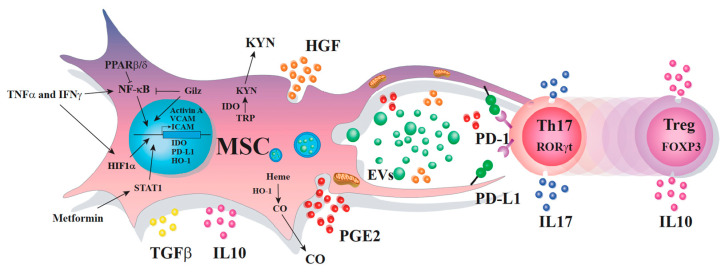Figure 1.
The multifaceted immunoregulatory dialogue between MSCs and Th17 cells. MSCs and Th17 cells communicate through many different ways that include the release of soluble factors, the transfer of mitochondria, the production of extracellular vesicles containing various molecules, and cell-to-cell contact. When MSCs and Th17 cells are near one another, they dialogue through the release of messengers including PD-L1, HGF, and PGE2 that are highly expressed when MSCs are co-cultured with Th17 cells. Moreover, MSCs (nearby Th17 cells) start to express high levels of IDO and HO-1, releasing some EV-containing immunoregulatory factors and transferring their mitochondrial via transient cell fusion and tunneling nanotubes. In return, Th17 cells start to express high levels of PD-1, exhibiting a reduced production of IL-17 and expression of RORγT, while increasing the capacity to release IL-10 and to express Foxp3. This type of signaling, in which MSCs and Th17 cells communicate over relatively short distances, regulates the phenotype and function of both cells.

